I may get commissions for purchases made through links in this post.
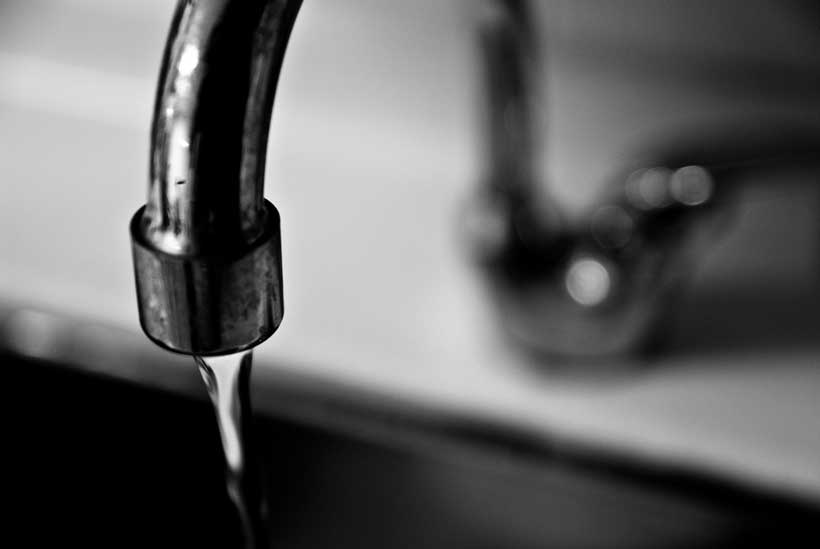
Remember back in the day when we could rely on safe drinking water in our homes? Well, those days are long gone. In general, more hazardous substances are present in public water than ever.
It should be noted that public water quality differs greatly per region and your water may be perfectly clean. NYC drinking water for example has won awards based on tests on taste, mineral content, and lack of contaminants.
Which is why it’s wise to be aware that some filter companies use scare tactics to make people believe they need filters when they may not need them at all.
Yet still, not only in the USA but also in parts of Western Europe, previously known for their healthy drinkable tap water, overall quality has declined. Decades of excavation and drilling activities, serious industrial pollution, animal medicines and over-fertilization have contaminated tap water sources.
When even water supplier companies themselves are ringing alarm bells you know it’s time to take measures into your own hands and turn to using point-of-use devices.
“We, as water companies, know that every pipe is going to leak at some point.”
Government scientists now generally agree, that many chemicals commonly found in drinking water pose serious risks at low concentrations.
Depending on where you live, tapping a glass of water from the kitchen faucet can vary from getting a healthy beverage to pouring a cocktail of various contaminants. In other words, there is truth to the horror stories about severely polluted tap water.
Sickmakers that may lurk in your water include carcinogens, substances that affect the endocrine system and nervous systems, Volatile Organic Chemicals (VOCs) such as pesticides, herbicides, chemical by-products created during water treatment, MTBE, a gasoline additive, and even rocket fuel, arsenic and fecal waste.
Thus, your tap water may put you and your family at risk, which is why doing your research can be essential.
According to former E.P.A. administrator William K. Reilly:
“For years, people said that America has the cleanest drinking water in the world. That was true 20 years ago. But people don’t realize how many new chemicals have emerged and how much more pollution has occurred. If they did, we would see very different attitudes.”
Which is why public health experts and environmental organizations recommend for most people in the U.S. as well as many other countries to filter their tap water.
Which home water filter to choose?
There are numerous water filters on the market utilizing various techniques to filter the water. This makes choosing the right water purifier to treat the drinking water in your home a daunting task. This water filter buying guide will show you in four steps that getting the best filter for your needs is not as difficult as it may seem.
Things to consider when purchasing a home water filter system
Keep these three things in mind when deciding on a filter for your home.
- How effective is the filter? In other words, what does it remove and in which extent does it remove those pollutants?
- Costs. How much does it cost to run the filter(s) on a day to day basis. Apart from the initial costs there are filter replacement costs, power usage costs, etc.
- Ease of use. How much time does it take to filter water for usage? Do you have to just switch a button or does it involve labor? Some devices require maintenance, recharging etc.
Step 1. Determine capacity and purpose.
Purpose
Decide why exactly you want to filter your home’s tap water. People buy filters for the following reasons.
- Safe drinking water. The main reason for buying a home water filter is to ensure your drinking water is safe and tasty.
- Better tasting tap water. The removal of calcium carbonate from tap water can improve taste considerably especially when water is reused in a coffee machine or in a water cooker or kettle.
- Safe showering and bathing. Other reasons are to avoid to avoid dry skin and frizzy hair due to chlorinated water as well as inhaling and absorbing chlorine and related chemicals through your skin while showering or bathing. Read more about the benefits of shower water filters.
- Soften hard water and prevent damage caused by hard water. You may want to bring a water filter in the home to extend the life of clothing, prevent scaling or spotting and filming on dishes or surface, and prevent damage to pipes and showerheads. To ensure your water lathers properly with soap.
The thought that the need for shower filters has been created by clever marketeers may occur but as it turns out studies do indicate that serious health risks are linked to chlorine and its byproducts in the water in your bathroom. Chlorine is also linked to kidney stone production.
Although ingestion is commonly considered to be the primary source of exposure to chloroform from tap water, inhalation and skin absorption exposure concentrations were found to be even higher. Source: PubMed.
Some more specific reasons to filter your tap water:
- In some areas the there’s more chlorine in tap water than in pool water,
- older plumbing systems may cause lead exposure, pipes may rust, and century old wooden water mains (rare but not uncommon) may cause contaminations,
- single-celled, chloride resistant protozoa, such as giardia and cryptosporidium can pose serious health threats
- millions of individual cases of waterborne diseases occur annually
- according to the NY Times, the 35-year-old federal law regulating tap water is so out of date that the water Americans drink can pose what scientists say are serious health risks — and still be legal.
Capacity
If you have a single person household a filter pitcher may suffice or you may one of the following types of filters.
- pitcher filters – inexpensive if frequent filter replacement isn’t required (moderate use), filtering is slow.
- faucet-mounted filters – inexpensive – switching between filtered and unfiltered water is often possible – requires more frequent filter change than countertop or under the sink devices
- showerhead filters – replacement cartridges – two media filters: KDF and granulated carbon are most effective.
- under-the-sink filters – discrete placement, infrequent filter replacements, requires installation and in some cases plumbing alteration
- built-in refrigerator filters (cartridges)
- whole-house filter systems – combine a variety of media types and treat all of the water in your house
- whole-house water softener with an ion exchange filter to soften your water.
The next step is to find out which contaminants you need to filter out of your water.
Step 2. Determine what you want to filter out of your tap water
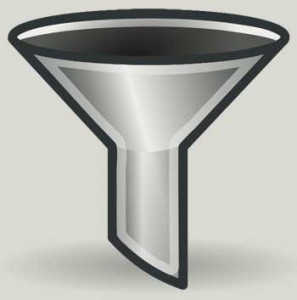 It would be great if a one-type-fits-all kind of water filter would exist. Sadly, this isn’t the case. Not every filter type will eliminate every contaminant so you will have to assess your tap water.
It would be great if a one-type-fits-all kind of water filter would exist. Sadly, this isn’t the case. Not every filter type will eliminate every contaminant so you will have to assess your tap water.
Doing your research in order to find out which contaminants to target takes some time and effort. It is, however, an important step since if you buy the wrong purifier you’ve not only wasted money but you’ll end up with equipment that isn’t making your water any safer.
In order to know what to filter you need you have to know where your water comes from. You can check the consumer confidence report (CCR),
- released by your water supplier online,
- or provided with your bill each year.
- You may also find the CCR posted on your local government website,
- or printed in your newspaper.
Apart from your annual water-quality report you can also check the NRDC report What’s On Tap?, contact a testing laboratory or your local health department for assistance.
This way you can find out how your local municipal water district has complied with existing regulation and find out about contaminants present in the water.
- in the US, locate your water authority at EPA.
- For more information about your drinking water in the UK, visit Water UK.
- In Canada, go to Health Canada.
- In Australia, check out the Australian Drinking Water Guidelines here.
How to make sense of all this info? Here are some sources that can help you interpret.
- The Centers for Disease control offers a guideline on Understanding Consumer Confidence Reports here.
- The “What’s in your water?” tool by the Environmental Working Group is another great source of information on local water supplies.
- Or use this guide to reading water quality reports at the Campaign for Safe and Affordable Drinking Water’s Web site.
Step 3. Testing your tap water quality
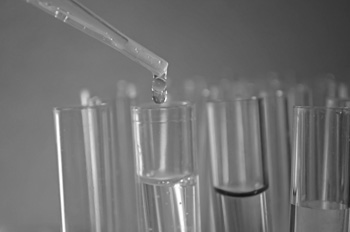 Testing will take some time, effort and cost you some additional money but it is important. A few reasons to test your home’s tap water:
Testing will take some time, effort and cost you some additional money but it is important. A few reasons to test your home’s tap water:
- Reactions in the distribution system. Municipal water may pass tests at its source but public water may still pick up contaminants on the way to your house.
- Outdated legislation and filtering technology. Current pollution can be removed with very costly and complex membrane filtration but it is often questioned whether these purification techniques are sufficiently able to continue producing clean drinking water on a large scale. The head of a Dutch water company asked out loud if current filtering technology is still on par with the state of soil and water pollution.
- Unregulated chemicals. A wide range of substances are completely unregulated by the SDWA or your country’s respective laws. Consumer confidence reports in the US may only contain data on the 91 contaminants regulated by the SDWA.
- Presentation method of the facts. CCR’s might not indicate potentially harmful spikes of a contaminant in your tap water thus providing a false sense of safe levels. This has to do with how violations are calculated (e.g., as an annual average instead of individual measurements) and the frequency of monitoring also influence how good of a picture you get from your report.
- The fixtures in your home may also affect water chemistry.
- You may not need a water filter. Companies selling water filtration systems have been misleading consumers into thinking their tap water was polluted. Water filters are trendy as well. Don’t believe the hype or fearmongering and examine your own personal situation before you purchase filtration for your home.
So in order to be entirely sure you should go a step further by testing your water at your home. This way you will know exactly which contaminants are in it.
There are a few options:
- You can have your water tested independently by a state certified lab. Self-testing kits are available online or at your local home center. Send these to the laboratory for results.
- There are TDS meters to measure the overall ppm yourself.
- You can use test kits such as the First Alert WT1 Drinking Water Test Kit which do not require lab testing. On the other hand, such DIY kits are not incredibly accurate and don’t test for all harmful contaminants. These are merely for an indication. To get an idea. People often use such home tests to determine if their water needs a more thorough, professional analysis.
- You can also hire the services of an inspector to check the water quality at your home.
People often use PH-TDS meters to test their water. A TDS meter, TDS stands for Total Dissolved Solids, lets you measure ppm (parts per million) of contaminants in the water.
in the U.S., the Environmental Protection Agency (EPA) advises against consuming water containing more than 500 ppm of TDS. However, many health specialists think that ideal drinking water should be under 50 ppm or lower.
Note: there are specific concentration standards per contaminant. The EPA standard for arsenic for instance is 10 ppb (parts per billion).
Sediment are particles in the water you can see. If not noticeable in the water itself you may encounter sediment residu in the bottom of the toilet or dishwasher and behind the shields of the faucet aerator.
You can call the Safe Drinking Water Hotline for more information at 1-800-426-4791 or visit their EPA’s Safe water Web site.
Step 4. Decide which filter is best for your needs
There are so many types of water filters available for the home and all the different medias and technology can be really confusing. Especially when you first start with researching this matter.
Depending on the type and concentration of contaminants present in your water you may need completely different equipment or possibly a combination of equipment.
For example in case in your area fluoride is added to your water. Carbon filters do not remove fluoride from your water. Some quality carbon block filters however come with attachments that do remove fluoride.
The best water filter type.
Let’s try to make it a little less complicated by letting you know that most people opt for a
- carbon type water filter
- or a reverse osmosis filter.
Common motivations to choose either the one or the other type:
- The reason for choosing a carbon block or activated carbon filter is that even if your water tests well it is still likely treated by your water company with chlorine and its byproducts as disinfectants.
- If your water does not test well a reverse osmosis filter system is probably best for your needs since it will remove antibiotics, hormones, and other pollutants that are not removed by carbon filters.
Many choose to combine best of both worlds and purchase a multiple stage system that has a carbon block filter as one of the media and most commonly reverse osmosis as the other main filtering technology.
To be sure, call your local community water system to ask if they use chlorine and chloramines (a mixture of chlorine and ammonia).
If they do you will want a certified filter able to remove chlorine, chloramines and trihalomethanes (a carcinogenic by-product of chlorination).
The best filter type to remove these substances are activated carbon filters / carbon block filters. Carbon adsorption has numerous applications in removing impurities from water or air.
People commonly install a RO filter in the kitchen for safe drinking water and a carbon filter in the bathroom for safe washing and tooth brushing and face washing.
But I heard that carbon filters do not remove chloramine?
Fact is, some carbon filters can remove chloramine but others cannot. Some regular carbon filters do indeed remove chloramine. It is however a fact that more carbon and contact time are needed to clear your water from chloramine. In other words, you will need a larger, more potent carbon filter then when only chlorine is used by the water company.
Carbon filters are best at removing taste, odor, color, chlorine, sediment, and VOC’s
Carbon water filters
Water that flows through the positively charged highly absorbent carbon (charcoal) is filtered by a process called adsorption. Pollutants present in the water are trapped inside the millions of tiny pores between the molecules in the carbon substrate.
Pros
- Quality carbon block filters are our best option for removing organic chemicals like VOC’s, pesticides and herbicides according to EPA.
- Removes bad tastes and odors
- Most affordable filter technique.
- These filters will remove most pollutants of concern such as bacteria, parasites (e.g. Giardia and Cryptosporidium), chemicals, pesticides, heavy metals (e.g. lead, copper, mercury), radon; and volatile organic chemicals (VOC’s) such as methyl-tert-butyl ether (MTBE), dichlorobenzene and trichloroethylene (TCE).
- Do not remove essential minerals naturally present in water.
Cons
- They do not remove fluoride. You need a filter attachment for that.
- Activated carbon is not effective at removing dissolved inorganic compounds such as arsenic, hexavalent chromium, nitrate, perchlorate and fluoride.
- Simple countertop filters may not be able to remove dangerious contaminants such as the rocket fuel ingredient perchlorate.
- The more potent ones can be bulky and take up counter space.
Good to know about carbon water filters
Carbon filters come in two forms, granulated activated carbon and carbon block. (Pitcher water filters often use granulated carbon.)
Carbon filters vary considerably in effectiveness. This effectiveness depends in part on how quickly water flows through.
The most effective carbon block filters are Fibredyne block filters due to a larger surface area which leads to a higher sediment holding capacity. Then come carbon block and then granulated activated carbon filters.
Many carbon filters are either impregnated with silver or use secondary media such as silver or Kdf-55 to prevent bacteria growth within the filter.
When is a carbon block or activated carbon filter your best option?
In case your water tests well but is treated with chlorine. Or if you need a shower or bathroom filter to remove toxic chlorine vapors and prevent absorption of chlorine through the skin.
Recommended:
The top-reviewed Berkey BK4X2-BB Big Berkey Filtration System.
What about pitcher filters?
Pitcher filters such as the popular Brita pitcher have their pros and cons. These are affordable and easy ways to drink pollutant-free water but they do not remove that many toxins because of the use of granulated instead of solid carbon. Pur and Brita pitchers remove chlorine taste and odor but not actual chlorine.
Pitcher filters also have cartridges that need to be replaced making them less cost effective in the long run. You also have to fill them up which makes them less ideal when the household consists of several people. The same applies to faucet mount external filters, which use the same technology.
If you are looking for a pitcher filter, take a look at these quality devices.
Recommended pitcher:
- Zerowater Z Pitcher, a certified five-stage device, recommended by Treehugger, that removes almost everything out of the water.
Reverse osmosis water filters
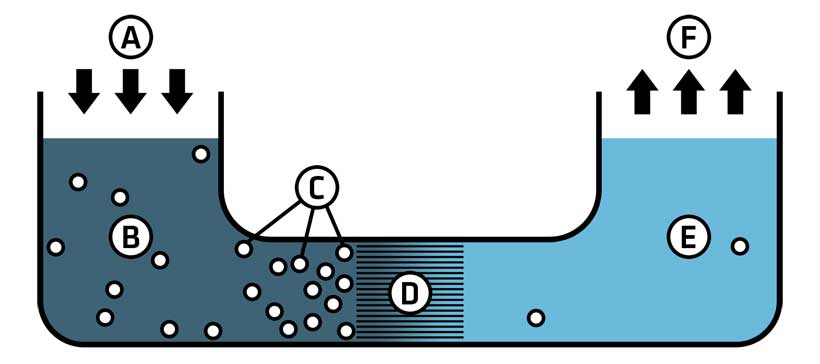
The most popular and best solution used when carbon block filters do not suffice. Reverse Osmosis (RO) filters are considered the safest filters. In other words, they remove the most contaminants.
RO filters push water through a semi-permeable membrane that prevents particles larger than water molecules from passing through. The residue of contaminants held by the membrane is flushed away with additional water.
Although carbon filters are the least expensive filters reverse osmosis may very well be the most cost effective solution depending on your situation.
Especially when you need to bring down the PPM of your water considerably and filter out viruses, filtrates, nitrates, arsenic, fluoride, dissolved solids such as calcium, sodium, magnesium, and inorganic minerals, RO will be your best option. RO is often used in conjunction with other filtering technologies, specifically carbon.
“I have tried carbon and PP filters but none of them could reduce the PPM to below 200”
Pros
- Most effective according to the Environmental Working Group (EWG). Reverse osmosis has the strongest contaminant reduction capabilities and can remove inorganic compounds not removed by activated carbon, including arsenic, asbestos, sodium, heavy metals (e.g. copper and lead), hexavalent chromium, nitrate, perchlorate and fluoride.
- RO also removes viruses
- Removes bacteria (whereas silver-impregnated carbon can control bacterial growth)
- Generally recognized to provide the best tasting water
- Filter systems are often convenientlly installed under the sink with a spigot over the counter for access to the filtered water.
- Can be used to make sea water drinkable
Cons
- Water inefficient. More water is wasted than produced. Up to three to five gallons of water are wasted for every one gallon of clean, filtered water produced. Note: of course, waste water can be collected and used for other purposes such as watering the lawn.
- Requires adequate water pressure to work so can not be used in case the home water supply does not function.
- Filters can be costly and need to be replaced regularly.
- Does not reduce VOC’s, chlorine and chloramines, and pharmaceuticals or other endocrine disruptors.
- Removes nutrient minerals from your drinking water. Demineralized water is acidic.
Good to know about reverse osmosis systems
Often when manufacturers include activated carbon as secondary media in their reverse osmosis systems less quality carbon is used.
Commonly convenientlyl used in under-the-sink units thus taking up no kitchen counter space. RO systems generally incorporate a carbon filter or UV disinfection unit.
Some systems come with mineral filters that add the nutritional minerals back to the water after the RO process. Adding back essential minerals can also be done manually.
When is an RO system your best choice?
If you have the need to filter out contaminants that cannot be removed with a solid carbon block filter a RO filter system is likely to be best. It is the safest method since it removes the most contaminants.
If you are able to reuse the waste water is can be an ideal system for your high demand water filtering needs.
Recommended:
- The bestselling iSpring 75GPD 5-Stage Reverse Osmosis Water Filter System.
Distillation water filters
These filters heat water to create steam which then condenses leaving behind contaminants. Use of home distillation water filters isn’t as popular anymore. This type of filtration is mostly used by laboratories and industries.
Pros
- Reduces large particles like minerals and bacteria, viruses and chemicals that have a boiling point higher than water. Removes asbestos and heavy metals such as chromium, cadmium, copper, lead, and mercury.
- Does also remove fluoride, arsenic, barium, sodium and selenium.
Cons
- Distillers cannot remove many other chemicals including chlorine, trihalomethanes or volatile organic chemicals (VOCs) since they vaporize with the water and rise with the steam ending up in the filtered water. Filtration also does not remove endocrine disruptors.
- Distillation systems are often large and expensive, use lots of electricity and do not work during power outages.
- Remove necessary minerals from the water.
- EWG’s water filter guide does not include any filters based on this technology.
Recommended:
- If you do want a home distillation system the Waterwise 8800 Water Distiller Purifier is a well-reviewed system.
Other home water filter technologies
- Sediment filters typically trap larger particles like dirt, rust and sand. These employ filtration by capturing the larger particles, contaminants such as microorganisms and insoluble minerals that aren’t dissolved in water. This is often referred to as turbidity.
- Ozone filters. These filters basically push oxygen through ultraviolet light. This process creates ozone which is added to the water in the form of bubbles. The Ozone molecules release free radicals, oxygen atoms. These atoms are very toxic to most microorganisms present in water and thus, by a process called oxidation, disinfect the water. Only remove parasites, bacteria and other microorganisms and pathogens. Therefore for most home owners only useful as an additional medium in a multiple stage water purifier system.
- Ultraviolet filter systems. Remove bacteria and parasites. Class A systems are designed to protect against hazardous bacteria and viruses, including Cryptosporidium and Giardia, while class B systems make non-disease-causing bacteria inactive. UV filters do not remove chemical contaminants. EWG’s water filter guide does not include filters based on this technology.
- Mechanical and ceramic filters. Small holes in these filters trap contaminants such as cysts and sediments. They are often used in conjunction with other kinds of technologies, but sometimes are used alone. A major downside is that they cannot remove chemical contaminants.
- Ozone water filters. Ozone kills bacteria and other microorganisms but is not effective in removing chemical contaminants. EWG’s water filter guide does not include any filters based on this technology.
- Deionization, Water softening and Ion Exchange filters. They remove or exchange ions in order to remove ionic contaminants and/or to soften water.
- Water softening systems. Hard water leaves mineral residue. Water softener systems are installed to reduce water hardness and remove barium but do not remove most contaminants. Also called cation exchange softeners, they employ an ion exchange process to lower levels of calcium and magnesium which can build up in plumbing and fixtures. These systems add salts to the water which is why a reverse osmosis system for the drinking water is recommended. RO removes these salts.
Certification
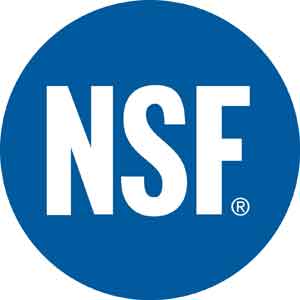 Filters vary widely in quality. To be sure, pick a device that is certified by the National Sanitation Foundation (NSF) which is a reputable product evaluation company.
Filters vary widely in quality. To be sure, pick a device that is certified by the National Sanitation Foundation (NSF) which is a reputable product evaluation company.
Do keep in mind that an NSF certification does not necessarily mean the filter will remove specific pollutants. It may also refer to taste improvement or other aspects since different certifications exist. Therefore it is recommended to look for filters labeled NSF/ANSI Standard and that are certified to remove the contaminant(s) of concern in your water.
NSF/ANSI 42 and NSF/ANSI 53 standards refer to carbon filters and NSF/ANSI 58 to RO filters.
If you are not sure if a device you are considering is an independently certified water filter with the appropriate certification you can search for NSF certified drinking water treatment units in their extensive database here.
The Water Quality Association (WQA), also run independent product testing programs. These organizations guarantee you that the devices remove the specific compound the manufacturer claims to remove at the level stated. The WQA provides an online listing of products that have been Gold Seal Certified or have passed testing to verify their claims.
Things to consider before buying
- Calculate what capacity in gallons per hour you need to filter the water in your home.
- Be aware of costs of maintenance such as filter replacements
- Decide if you need an indicator light which will alert you that filters need to be replaced
- Do note that pure water (i.e. water of which all impurities are removed) does not contain any of the normal minerals present in most water supplies. When truly pure water ingested it leaches beneficial nutrients out of the cells in your body in order to create equilibrium. Long term use of pure water can result in health risks, because calcium and other nutrients are slowly extracted from the bones.
- Know that filters in units that allow you to temporarily disable the faucet installed filter have a longer lifespan. This may come in handy in case you will be boiling water since you will then also eliminate toxins. Thus, when boiling water for tea, pasta, instant soup and so on may you may not need the filter. Provided that chlorine concentrations in the water are low because boiling also removes chlorine at low concentrations. It does also remove higher concentrations but this requires cooking it for up to 30 minutes making is very energy inefficient (and time consuming).
Something about bottled water
This is still far from common knowledge but bottled water is not a viable option for a plethora of reasons.
- It is expensive,
- Producers may be scamming you since almost half of the bottled water is plain tap water,
- Public water EPA standards do NOT apply to bottled water and it is overall less regulated than tap water
- A recent test by the EWG found DBPs, Tylenol, arsenic and more than 30 other pollutants lurking in bottled water,
- Plastic bottles often contain the harmful chemical BPA and may leach other hazardous (hormone-like) chemicals into the water
- The bottles are very environmental unfriendly. It is estimated that more than 5000 garbage trucks full of empty plastic bottles are thrown away each day.
Bottled water will become a thing of the past (it’s not for no reason the sale of plastic water bottles in now banned in California) They can be useful in certain circumstances but are by far no sustainable option.
For more in-dept info watch Tapped. Many switched from bottles to filtered tap water after watching this documentary exposing the water bottling industry.
Wrapping it up
All the terms and technologies can make choosing a home water filter confusing but it’s actually not that hard. First you find out what’s in your water, preferably by testing it.
Then you decide if you can suffice with a carbon block filter or need a reverse osmosis filter. If you do need an RO system you decide if adding one to the kitchen and carbon filters to the bathroom will meet your needs. Then you only have to think about whether or not you need a water softening system or not.
Image credits: tap, Mark Lee, Flickr. RO schematic, Wikimedia Commons. Lab test, Pixabay, Filter, Wikimedia.











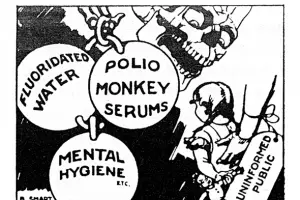


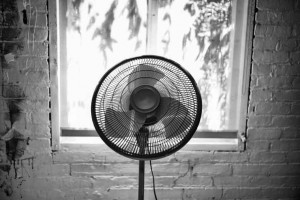

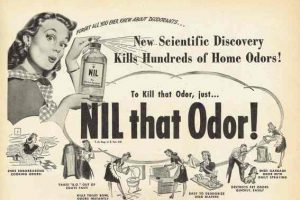






I ordered one of the Berkey water filters but now I am looking on their website and I do not see a NSF certification anywhere. Why would you encourage people to buy a filter and then say only buy filters with an NSF certification when the filter doesn’t have one?
Hi Victoria, you are right, Berkey do not have a NSF certification http://berkeyfiltration.com/faqs/. To clarify, I’m not recommending to purchase NSF certified water filters only, nor to stay away from those. My advice is to take this into account during the decision process, especially when you’re considering a less reputed or reviewed brand or model.
As the NRDC state: “the NSF certification program is not flawless, it does provide some assurance that at least some claims made by the manufacturer have been verified.”
Berkey filters, although not NSF certified, however, are widely valued for their great taste, ability to remove a wide range of contaminants including viruses, reliability, while keeping most beneficial minerals and their affordability,.
It’s a widely recommended carbon filter that consistently performs exactly according expectations in lab tests, which is why they are loved by so many.
If you’re adamant on NSF certification you could get filters from other US companies such as Pro Pur that make NSF certified filters that fit the Berkey system. (Pro-Pur components are NSF certified for material requirements).
For all water filter systems, certified or not, goes that if you want to be absolutely sure it does what it’s supposed to, you should get your filtered water analyzed. By having it tested you will know it is working.
Please advise if the pur sink filter adds sodium in the filtering process. I cannot find any info regarding as to this situation. Thanking you in advance, Michael
Hi Michael, I contacted the manufacturer and they told me that “PUR filters do not add any sodium to the water. Our filtration medium is solid block carbon, which is not added to the water in any way.”
My wife and I have been wanting to look into water purification for our home for the past few weeks. A lot of our neighbors have similar systems and I think that it would be a great thing to have in our home. It’s not always clear just what is coming out of your tap when you get a glass of water so it would be really nice to know that all of the bad stuff is being filtered out. These tips will definitely help us with our search, thank you for sharing!
do you know which carbon block based systems filter out a VOC called Tert Butyl Alcohol? Many companies do not include this VOC in their lists. Thanks.
I really like what you said about taking into account the ease of use of the filter. With my little kids, it needs to be easy for the whole family. When I go to buy a water filter, I’ll be sure to keep that in mind.
I agree that you should determine the capacity and purpose of why you are needing/wanting to filter your home’s tap water. You also suggested that the main reason is to have safe drinking water. I think it’s a good idea to choose a company to install your water system that can also repair it if needed.
Nice guide. My home is using a reverse osmosis water system. But the cost for replacing the filters is so expensive.
RO filters really aren’t that expensive, though, in terms of price per gallon. Maybe they do cost like $100, but when each filter can handle 1000 gallons, it’s really not that bad when you do the math.
If you wanna see expensive filters, just look at Brita filters…
Right now my husband and I are looking for a water filter to have installed in our home. We want to ensure that we have safe and good tasting water for both us and our children. As you said, making sure that a system is certified by the National Sanitation Foundation can help ensure a well-evaluated product.
10 Things You Need to Know Before You Buy the Best Home Water Filtration System:-
Selecting a water filtration system that meets your need can be overwhelming. There are hundreds of brands of water filters on the market. Whether you need to filter contaminants causing taste, odor, or aesthetic problems in your drinking water, or to filter chlorine that makes you itch after a shower, the following are 10 things you need to know when you are ready to buy a filtration system for your home, apartment, or office:
1. Look for a National Sanitation Foundation (NSF) certified treatment system. NSF certified water filters have been rigorously tested to meet strict health and safety standards. Other third party certifications are the Water Quality Associations and Underwriters Laboratories.
2. In addition to the NSF, some systems are certified by one of several local and state health departments. This is an added assurance that the water filtration meets the local or regional standards.
3. Make sure the filter housing unit comes with a warranty in case of damages.
4. What if the system does not filter properly soon after you buy? Ask if it comes with a money back guarantee (30 days or more).
5. Replacing filters every month is an unnecessary burden. Make sure you understand how often you will need a change filter and the cost of each replacement cartridge.
6. Does the filtered water flow directly from the tap to your glass or do you need a storage tank? This feature comes with advantages and disadvantages. Stored water could be handy during emergencies, and dispensing may be slow when used with a storage tank.
7. If the test shows that you have more than one contamination problems in your water, look for a filter designed to remove multiple contaminants.
8. Ask how long the filter manufacturer has been in the home filtration business. The longer they have been in the business, the better the manufacturer will understand the need of consumers.
9. Complex and expensive installations will negate the benefits of the system. Make sure the filter is easy and inexpensive to install.
10. Don’t pay for an overpriced and untested water filter! Avoid a water filter scam.
Good Luck!
There are many, many different kinds of water filters available on the market today. Because of that, it is nice to get some advice on what you need to be looking for when choosing a water filtration system for your home. After all, you’d want to look at all of your options like carbon and pitcher filters before choosing one.
My wife and I don’t like how the water tastes in our new home, so we are looking into buying a filter soon. I like your point about being aware of any maintenance costs for the filter you get. We’ll be sure to research this so we know what kind of money we’ll be spending on new filters and repairs.
Thank you for providing such valuable information in your article. Pure drinking water is essential for our health. I really appreciate what you said about considering the filter’s usability. With my young children, it must be convenient for the entire family. When I go to purchase a water filter, I will keep this in mind.